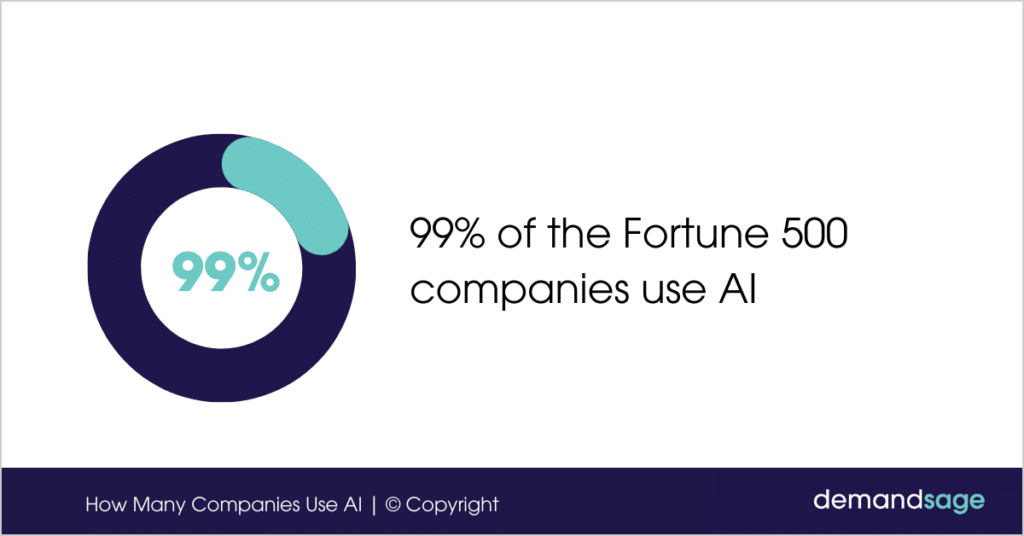As organizations grow larger, so do their challenges—spanning operations, logistics, customer service, compliance, and beyond. In 2025, artificial intelligence (AI) has become more than a buzzword. It’s the backbone of enterprise agility, efficiency, and innovation. The future of AI in large-scale business operations lies not in isolated applications, but in strategic, organization-wide integration.
In this guide, we’ll explore the current trends, tools, and future forecasts shaping how large enterprises use AI to stay ahead.
Introduction: Why AI is Reshaping Enterprise Operations
Large businesses are data-rich but insight-poor. AI addresses this imbalance by processing massive volumes of structured and unstructured data to reveal patterns, automate actions, and support faster, smarter decisions.
With rising customer expectations and market volatility, organizations are turning to AI to:
- Streamline complex workflows
- Reduce costs at scale
- Enable real-time decision-making
Key Drivers Behind AI Adoption in Large Organizations
- Cost Reduction: AI-powered automation significantly reduces labor, error, and processing costs.
- Efficiency & Scale: AI allows businesses to scale without linear increases in headcount.
- Competitive Advantage: Early adopters gain an edge by operating faster and with greater precision.
- Workforce Augmentation: AI handles repetitive tasks, allowing employees to focus on strategic work.
Current Use Cases of AI in Enterprise Environments
| Function | AI Use Case |
|---|---|
| Customer Support | Chatbots, voice assistants, support ticket routing |
| Supply Chain | Demand forecasting, logistics optimization |
| Finance | Fraud detection, cash flow prediction |
| HR | Resume parsing, attrition prediction |
| Marketing | Customer segmentation, personalized campaigns |
Emerging AI Trends for Enterprise Operations
- Multi-Agent Systems: Networks of intelligent agents working autonomously across departments.
- Generative AI Integration: Used for report writing, documentation, content, and code generation.
- AI-First Business Models: Entire products and platforms built around AI from the ground up.
- Conversational Interfaces: Enterprise chatbots capable of replacing internal knowledge bases.
Sector-Specific AI Implementation
🏦 Finance:
- Intelligent compliance
- AI-enhanced risk modeling
🛒 Retail:
- Dynamic pricing
- Personalized promotions
🏥 Healthcare:
- Predictive diagnostics
- AI for patient scheduling and support
🏭 Manufacturing:
- Predictive maintenance
- Smart factory automation
Enterprise-Level AI Tools & Platforms to Watch
| Platform | Strengths |
|---|---|
| Microsoft Azure AI | NLP, vision, and seamless Office 365 integration |
| Google Vertex AI | ML model lifecycle management |
| IBM Watsonx | Enterprise AI governance and trustworthy AI |
| Salesforce Einstein AI | Embedded AI in CRM, sales, and service functions |
These platforms offer prebuilt models, APIs, and deployment support for large-scale applications.
How AI Is Enhancing Enterprise Decision-Making
- 📊 AI-Powered Dashboards: Visualize live data and generate real-time insights.
- 🧠 NLP-Based Reporting: Convert complex analytics into natural language summaries.
- ⚡ Event-Driven AI Triggers: Automatically respond to anomalies or key business events.
Building an AI-Centric Operational Infrastructure
To scale AI across an enterprise, businesses must focus on:
- Data Strategy: Centralized, clean, and accessible datasets
- Integration Layer: APIs and middleware to unify systems
- Cloud Infrastructure: Scalability and compute power for model training and deployment
The Role of AI in Digital Transformation at Scale
AI is a critical enabler of digital transformation, modernizing legacy systems and enabling:
- Cross-departmental automation
- Real-time data sharing and collaboration
- Predictive analytics for strategic foresight
Companies leading in transformation are embedding AI in every layer of operations, not just isolated teams.
Risks and Challenges of AI in Large-Scale Businesses
- Ethical Risks: Bias in data and AI decisions can damage reputation.
- Data Privacy: Enterprises must secure personal and proprietary data under strict regulations.
- Integration Complexity: Merging AI with legacy systems can be costly and time-consuming.
- Organizational Resistance: Teams may be skeptical or fearful of automation displacing roles.
Preparing the Workforce for Enterprise AI
Scaling AI is not just technical—it’s cultural. Success depends on:
- Upskilling Programs: AI literacy across departments
- Human-in-the-Loop Systems: Workers managing and improving AI workflows
- Clear Communication: Defining AI’s role to reduce fear and build confidence
KPIs to Measure AI’s Impact on Business Operations
| Metric | What It Shows |
|---|---|
| Time-to-Insight | Speed of decision-making |
| ROI on Automation | Cost savings per workflow |
| Model Accuracy & Precision | Predictive success of AI systems |
| Employee Productivity Gains | Time reclaimed from automation |
| Customer Satisfaction (CSAT) | Impact of AI on client experience |
Future Predictions: What to Expect by 2030
- 🤖 Hyperautomation: AI + RPA will handle end-to-end enterprise processes
- 🧠 AI Governance Systems: Ensuring responsible, transparent model use
- 🗂️ Decentralized AI Agents: AI “colleagues” embedded in workflows
- 🌍 Global AI-Driven Collaboration: Cross-border, multilingual AI operations
Conclusion
The future of AI in large-scale business operations is not just intelligent—it’s transformative. As technology advances, AI will shape how enterprises operate, make decisions, and compete. The key to success lies in building infrastructure, nurturing talent, and adopting AI not as a tool—but as a strategic pillar of growth.
The businesses that win in the AI era will be those that act boldly, scale responsibly, and adapt continuously.


